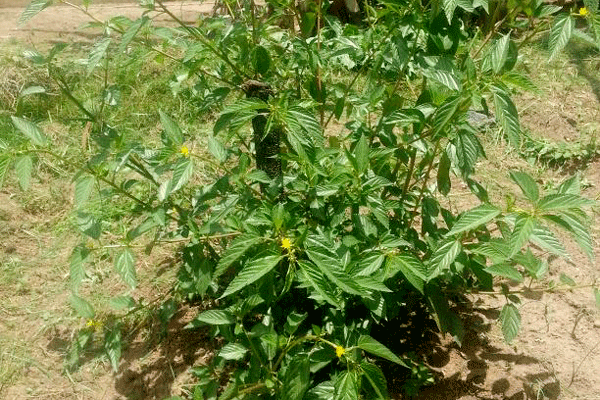
If there is one vegetable that my mother introduced to me as a child and I liked right away, it was okra, referred to as derere in my Shona language. Those who do not like okra, most likely do not like the fact that it is sticky and slimy.
gardening with Doreen Badze

Just as I had gotten used to the regular most popular okra, I quickly learnt there were other kinds of derere and that the name embraces several traditional vegetables that exhibit same slimy characteristics of okra. In my treasured rural experiences, during work in the maize field right by my mother’s side I learnt what was edible and what was not. Each rain season brings several weeds and among them is edible jute (nyenje) referred to by some as (derere repfumo), the name probably derived from the shape of its leaves that mimic the shape of a spear. It has different names in other parts of Zimbabwe. I have a Kenyan friend who calls it nderere or muchicha or mrera. The confusion got worse for my young mind when a neighbour from Mutoko gave my mother leaves of an unknown-to-us weed plant called bukwe to eat also as derere. It was difficult to comprehend then that derere was coming in different forms. The leaves of bukwe are dried and processed to a powder that is then cooked to a delicious slimy vegetable. Furthermore, I later learnt that hibiscus leaves can also be eaten as derere.
Jute (nyenje)
I have researched this vegetable, thanks to the internet. It has numerous names in many countries but is known as jute in English. If you goggle it, you will come up with all kinds of interesting information about this ancient vegetable that was eaten by our ancestors. Last year, as is usual during rainy season, the plant surprised me and showed up among other weeds in my garden. It surely brought me back many memories of my childhood. However, I had not eaten it for over 20 years even though I know very well that it is a delicacy. I immediately guarded the plant like a gold mine. I nurtured the plant the rest of the season and witnessed its maturity. I had never seen the plant in its maturity as the leaves were always harvested in their immature state that’s considered best for cooking. Well, I figured I had the opportunity of raising the one plant enough to harvest seed. The plant is what you see in the picture to the right and seed pods I saved for future crop. Unfortunately, I did not get a chance to plant them this season. Luckily, I got plenty volunteer plants in my garden that I am frequently enjoying the derere.
Nutrition of jute (nyenje) leaves
Our forefathers and mothers just knew somehow in the absence of internet and libraries what was nutritiously good for our bodies and what was not. Nyenje is believed to have originated from Ethiopia centuries ago and that meant there was no documented nutrition about this plant as well as many other indigenous fruits and vegetables back then. The leaves of jute, despite being delicious, are rated to have very high nutrition that include vitamin A, K, and C. It is used to thicken soups and stews just like the podded popular okra. No wonder they bear the same name, derere. Interestingly, the stem part produces fibres that are considered strong and second to what is produced by the cotton plant. In Bangladesh they produce jute fibres for export. I will have to independently research bukwe, the derere mostly found in the Mutoko area and dig deeper to figure out all about the precious plant that provides food for many people.
Tuta Absoluta Update
- Chamisa under fire over US$120K donation
- Mavhunga puts DeMbare into Chibuku quarterfinals
- Pension funds bet on Cabora Bassa oilfields
- Councils defy govt fire tender directive
Keep Reading
More and more farmers are reporting the presence of Tuta Absoluta from many provinces. The quality of open field tomato has reduced as evidenced by tomatoes seen at the Mbare Musika vegetable market. Farmers continue to wait for the Ministry of Agriculture to give directions on how to handle the invasion. Meanwhile, farmers are hoping from one chemical store to the other, hopping to find the magic chemical and so far, there are a few that seem to control the pest according to some agronomists. I urge farmers to get advice from agronomists and agritex officers. Those who are interested in joining our tomato whatsapp group are welcome using the telephone number given below.
This week seedlings in our nursery are; rape hobson, spinach, tsunga, covo and cabbage star 3316. Happy gardening week.
Doreen Mutobaya Badze is a retired nurse and passion-driven gardener. She can be reached on cell: 0779730880 or at 16 Metcalf Road, Greendale, Harare. Email: dbadze4@gmail.com Facebook Page: Badze Garden Nursery










